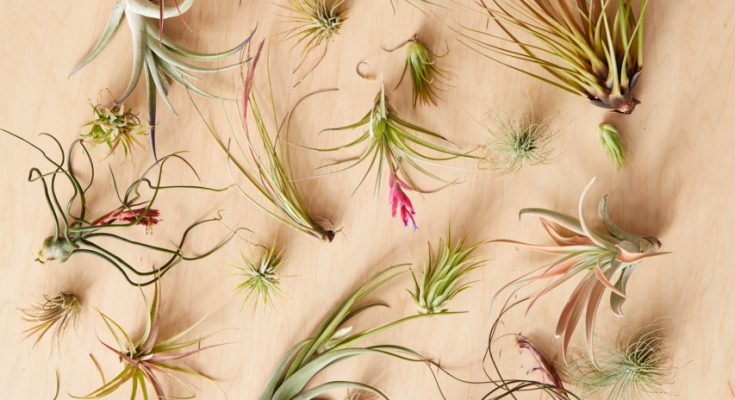Plants need soil to grow… or do they? You might be surprised to learn there’s an entire category of plants that require no soil at all!
Epiphytic plants have evolved to grow on the surface of other plants, clinging on with their roots for support. A common location for these types of plants is on branches of mature trees, where they can collect moisture from the air. A few types of epiphytes you might be familiar with include some species of ferns, orchids, and bromeliads.
Within the bromeliad family is a unique group of plants called Tillandsia, commonly known as air plants. These flowering perennials are native throughout most of South America as well as the southern portion of North America. With around 650 different species, this group of plants is incredibly diverse. Perhaps one of the best-known examples of an air plant is the iconic Spanish moss that drapes gracefully off of large trees in the southeastern US.
There’s no shortage of interesting ways to display your air plants—from hanging terrariums to display trays. You can have a lot of fun coming up with ways to group and display them on or around your potted plants. Read on to learn more about these unique plants and where to get started if you want to care for your own.
Some Of Our Favorite Air Plant Varieties
Tillandsia xerographica
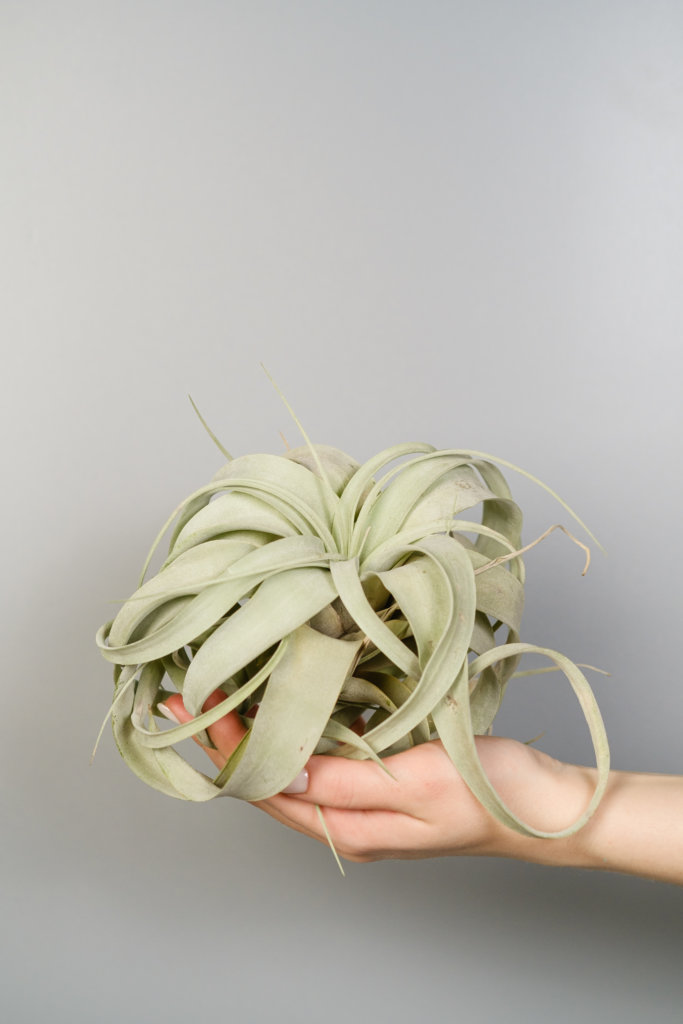
This species of air plant is one of the most popular, with a distinctive spherical shape formed by wide, silver leaves that elegantly curve back around the base of the plant. Along with being a favorite decor piece, it’s often incorporated into bouquets. It’s also one of the few air plant types that can handle direct sunlight.
Tillandsia ionantha
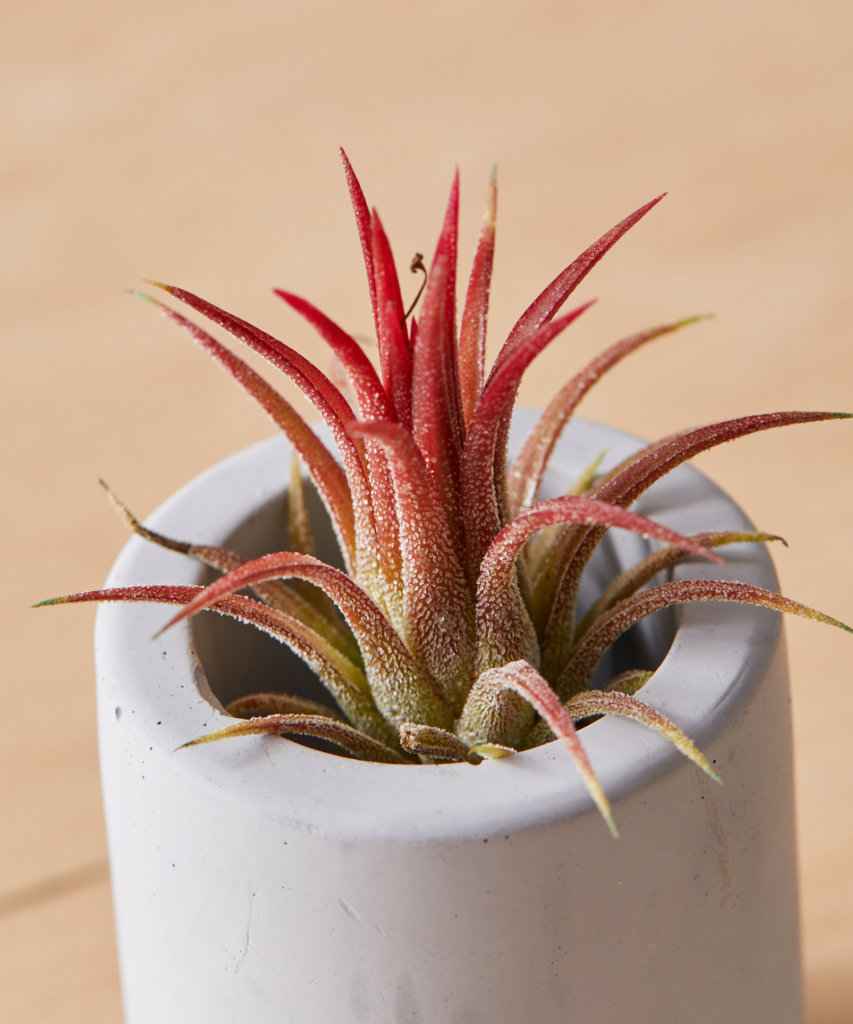
These plants are not only visually striking with their spiky shape but are also one of the hardiest species of air plants. Still, they love humidity and will appreciate regular misting to truly thrive. People love these for the contrast between the green or silver leaves and the bright, colorful leaf tips.
Tillandsia stricta
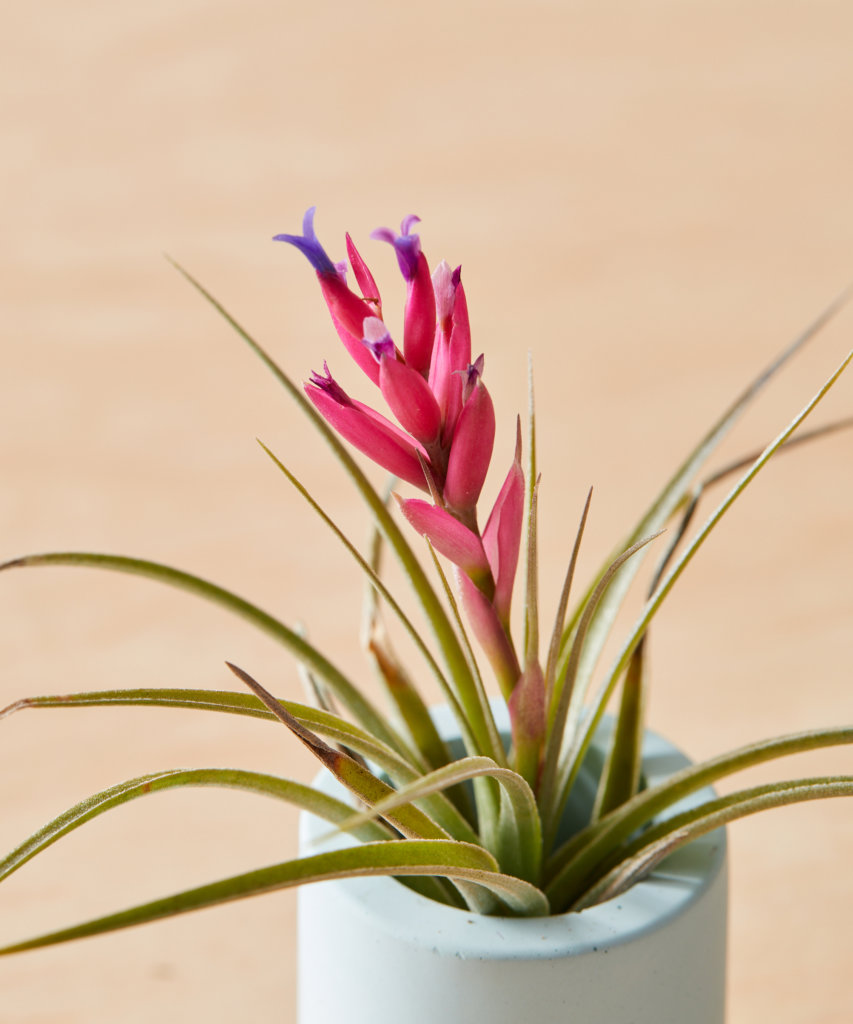
These plants are both eye-catching and adaptable to the wide range of conditions in many homes. With thin, grey-green leaves, they will display flowers that can be blue, pink, or purple depending on the cultivated variety.
Tillandsia brachycaulos
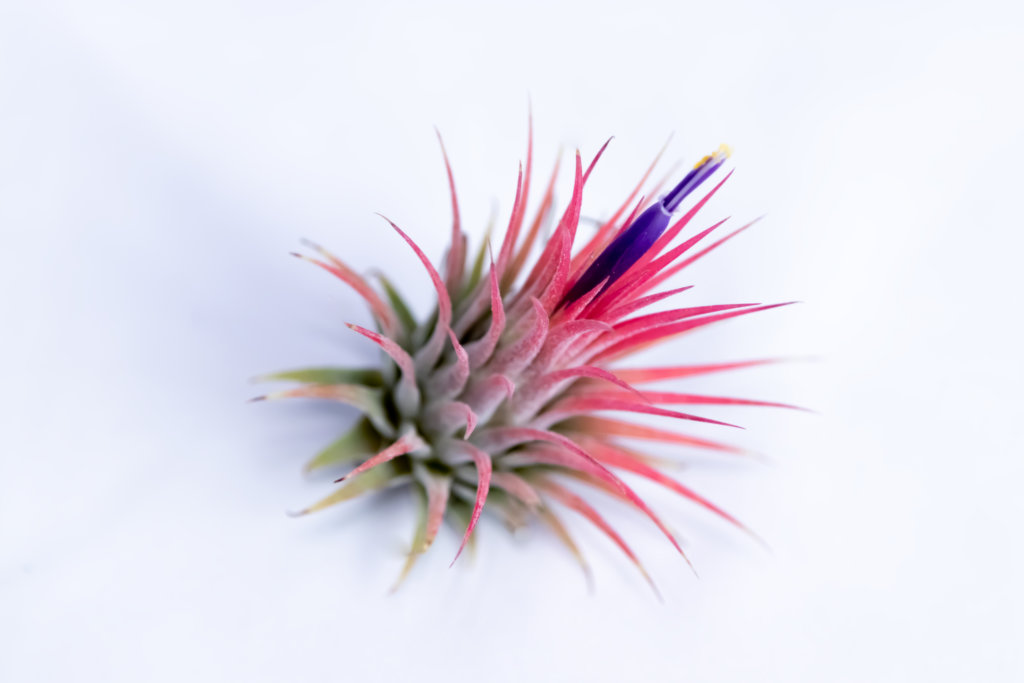
This air plant species starts out green, but their leaves can transition to an eye-catching purple or red shade right before they bloom with purple flowers. They’re a popular addition to any terrarium!
Tillandsia aeranthos
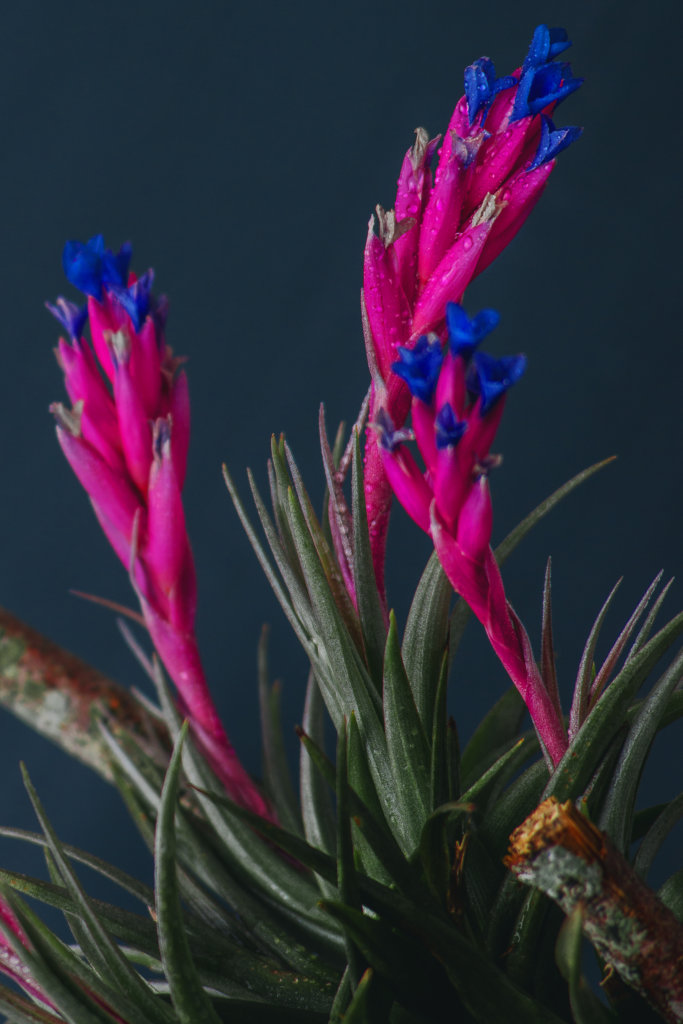
One of the few vertically growing air plants on our list, this variety will climb upwards with stiff green leaves before flowering with a beautiful pink or purple bloom in the warmer months. Bonus: This species is also very easy to propagate.
Tillandsia capitata
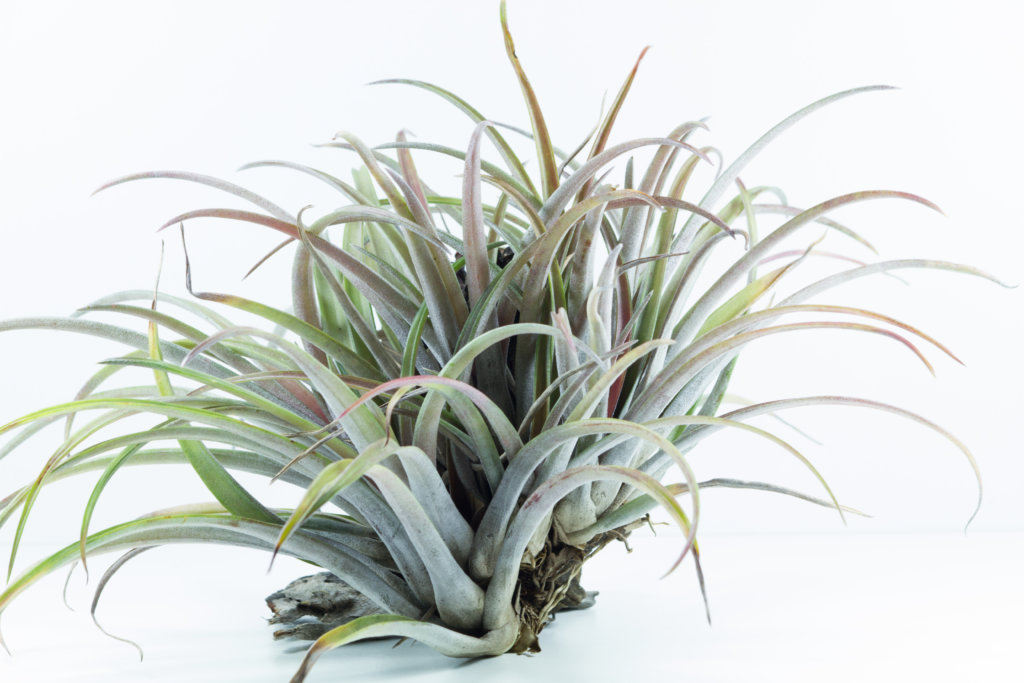
If you’re looking for an air plant that makes a statement, this curvy species is one of the largest on our list, growing up to 10 inches tall and 10 inches wide. It grows in a rosette shape and can produce multiple flowers among its velvety leaves.
Tillandsia caput-medusae
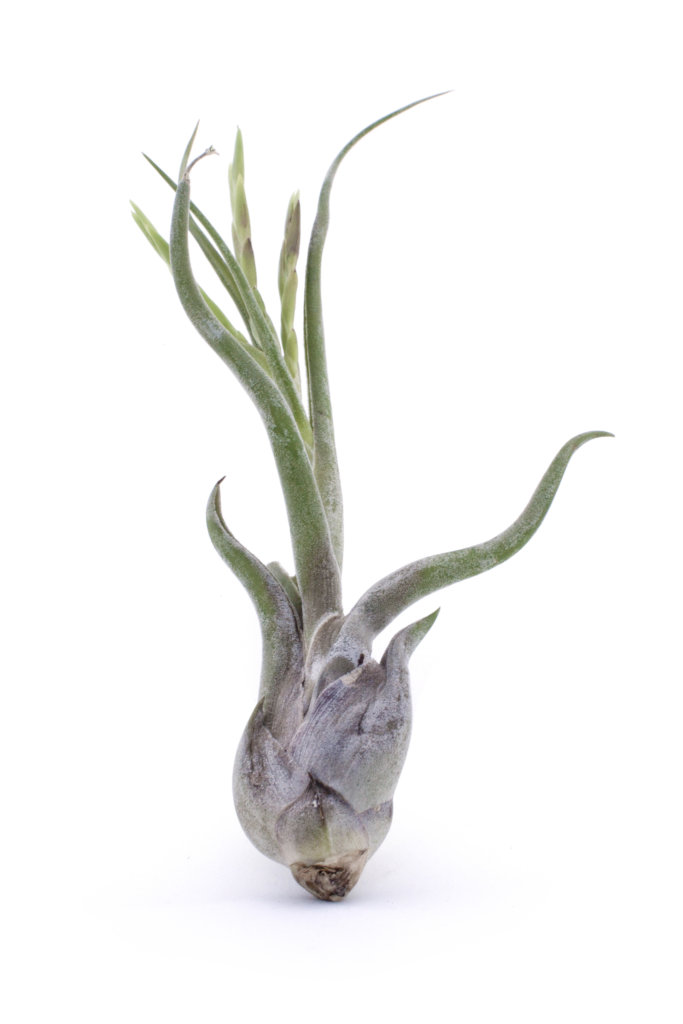
Unlike most air plants on our list, no matter which way you orient these plants, they will always grow straight out of the base. This plant is named for Medusa and her head of snakes. It won’t turn you to stone to look at it, but it will turn heads with its elegantly tangled tendrils.
How To Care For Air Plants
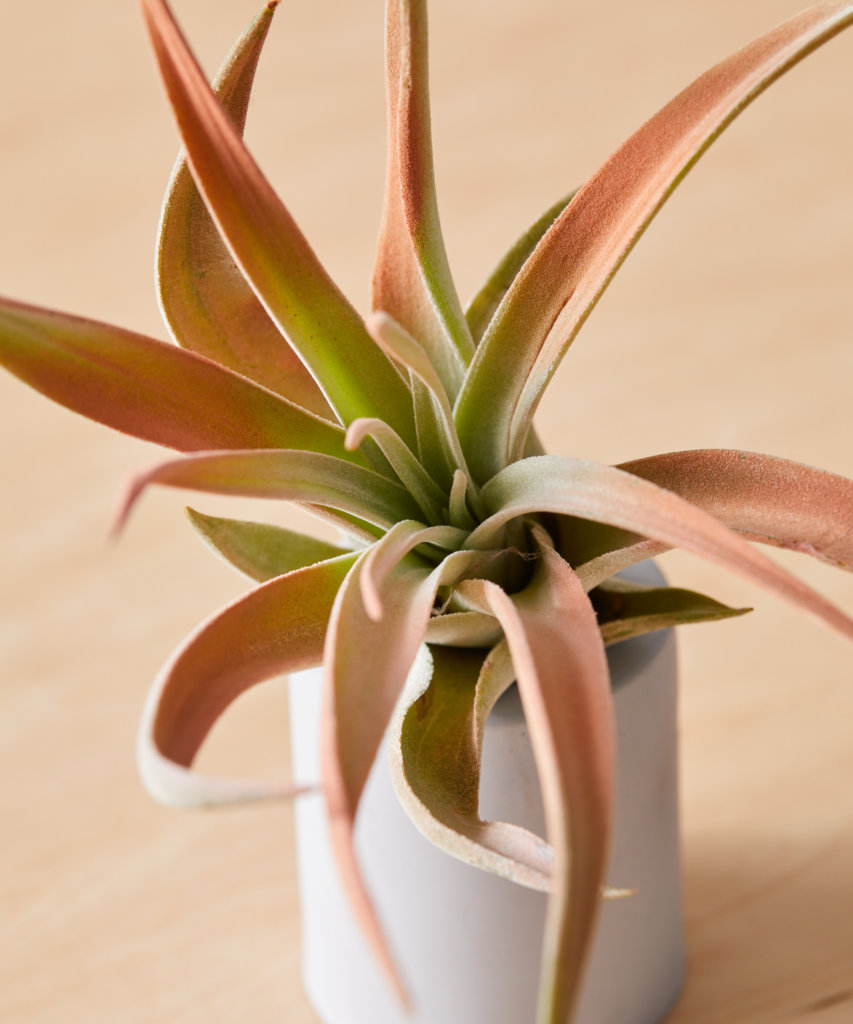
Air plant care is fairly easy, but differs quite a bit from caring for your potted plants. Here are some general guidelines.
Lighting
In their native environments, most air plants grow in the shaded boughs of trees and prefer to receive bright, but indirect, light. Do your best to keep them out of direct sunlight, which can cause the plant to scorch and dry out.
Those with north-facing windows, rejoice! These windows are ideal as they will only receive indirect light throughout the day. East-facing windows are a good choice too, since plants will receive direct light from the soft morning sun and indirect light the rest of the day. If you have south- or west-facing windows, place your air plants a few feet back out of any direct sunlight.
Temperature
Air plants love warm weather, so you’ll want to make sure they’re never exposed to temperatures below 45°F. They grow best in temperatures between 65-85°F.
Watering
In nature, air plants receive all their needed moisture from rain and high humidity, but the relatively dry air of most homes means regular watering is key for indoor air plants. They need to be watered every 1-2 weeks. In the winter, these plants typically go dormant and you can back off watering to only once every 3-4 weeks.
To water, fill your sink or a bowl with lukewarm tap water until the water is high enough to submerge the plants. Dunk your plants in and let them soak for half an hour, then remove them and place them upside down on a towel to allow excess water to drain out of the center of the plant. This step is extremely important, as water left to sit in the center of the plant can cause rot and death.
Fertilizing
Air plants don’t need much fertilizer. Without roots in soil, air plants absorb nutrients through their foliage. We recommend a plant food formulated for air plant growth, such as a foliar spray, once per month during spring and summer. Simply give your plant a few spritzes right after watering, being sure to follow the directions on the label. If you notice your air plant coloring up or producing a flower bud, this is a good time to give it a dose of fertilizer to make sure it has the nutrients it needs to sustain a beautiful bloom.
If you have any other questions about caring for air plants or coming up with interesting ways to display them, be sure to reach out to our Grow-HowR Team. We’re here to help you become a more successful plant person!
